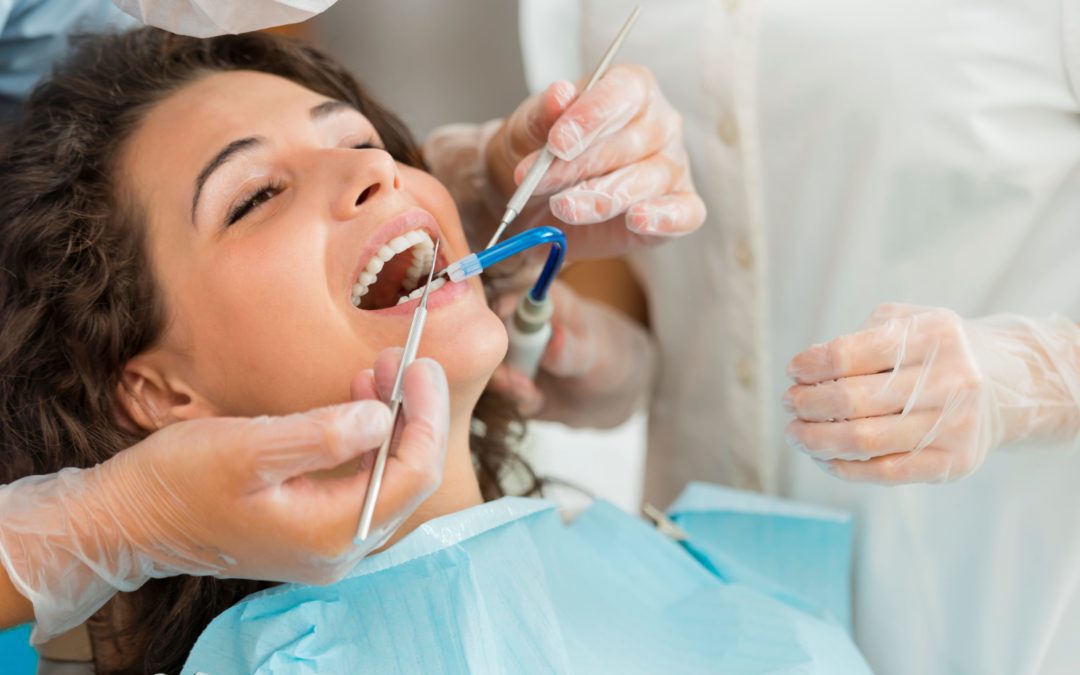A tooth extraction is usually a relatively quick procedure, but the post-operative care will last for a few days.
If you have a tooth extraction here at Hammoud Family Dental, we will provide you with a thorough list of post-operative care instructions before you leave, and we will answer any questions you may have. The recommendations may vary slightly depending on your mouth, what occurred during the procedure, your general health, and various other factors.
However, many dentists offer dental extraction patients with similar post-operative care recommendations, and they are generally based on the 10 following areas.
1. Ice Packs
You will be advised to hold an ice pack against the outside of your cheek after the procedure in order to minimize any swelling that may occur. You can use reusable cold packs, a bag of frozen vegetables, or a traditional ice bag.
We will give you a set of instructions regarding how to ice your cheek. Generally, however, dentists advise patients to hold the ice pack to the cheek for about 15 minutes, stop for 15 minutes, ice it for another 15 minutes, and so on for several hours after the procedure.
2. Spitting/Rinsing
After an extraction, the goal is for a “clot” to form in the area. This clot is necessary for healing, but it can become dislodged during rinsing or spitting. For that reason, you will be advised not to rinse vigorously or spit for 24 hours. You may brush your teeth, but swoosh gently as you rinse and then allow the water to drop out of your mouth as opposed to spitting it out.
3. Gauze
You will likely leave with gauze in your mouth, and you will be given additional gauze that you can use for changes throughout the day. The gauze serves two purposes: to minimize bleeding and promote clotting.
In most cases, the bleeding is minimal; when the saliva in your mouth mixes with the blood, it may appear to patients that the area is bleeding more than it really is. Biting down on a tea bag instead of gauze can often help stop the bleeding faster, as well as promote the clotting more than gauze would.
However, if you do experience heavier bleeding, call us for further recommendations.

Post-operative care recommendations after a tooth extraction may include avoiding spitting, using gauze, avoiding drinking through a straw, and using ice packs to minimize swelling.
4. Rest and Relaxation
You should schedule a day off for the day of surgery as well as possibly the next day, and plan to relax after your surgery. Avoid heavy lifting and strenuous exercise.
Typically, the bleeding only lasts for a few hours, if that, but avoid lying down after your surgery, as this can increase bleeding. Keep your head elevated throughout the day.
5. Pain Relievers
Dentists prescribe anti-inflammatory pain relievers to help reduce pain, swelling, and possibility of infection. If you would rather not use a prescription pain reliever, ask your dentist for other recommendations and suggestions.
6. Straws
Because drinking through a straw could create what’s known as a dry socket, you will be advised to avoid using a straw for one or two days after the procedure. A dry socket occurs when the clot is dislodged and leaves the nerves exposed. A dry socket can be very painful, and you may be required to return to the dentist in order to have the wound filled.
7. Smoking
Smoking also could lead to a dry socket, so you shouldn’t smoke after the procedure or for several days afterward.
8. Oral Rinse
You may be given a prescription-strength oral rinse to begin using two or three days after the procedure. Follow the directions on the bottle or the directions given to you before you leave the dentist’s office. An alternative option is a saltwater rinse.
Avoid alcoholic beverages or mouthwashes that contain alcohol for the first 24 hours after extraction.
9. Sutures
After removing the tooth, some dentists will use sutures to stitch the area. The dentist will remove the sutures about two weeks later. Some may instead use stitches that dissolve on their own within several days.
10. Soft Foods
On the day of the procedure and for a few days afterward, you should eat only soft foods, such as soups, yogurt, mashed potatoes, and similar foods. Doing so helps to ensure that the clot does not become dislodged and that hard food particles do not disturb the area. You may wish to avoid chewing on that side altogether for several days afterward.
Most tooth extraction patients have minimal side effects, but you should expect some tenderness and mild pain in the surgical area.
However, if you do experience excessive pain, bleeding, bruising, fever, or other complications, contact us immediately. We will provide you with additional suggestions regarding how to minimize these effects or advise you to return to our office for additional care.



Recent Comments